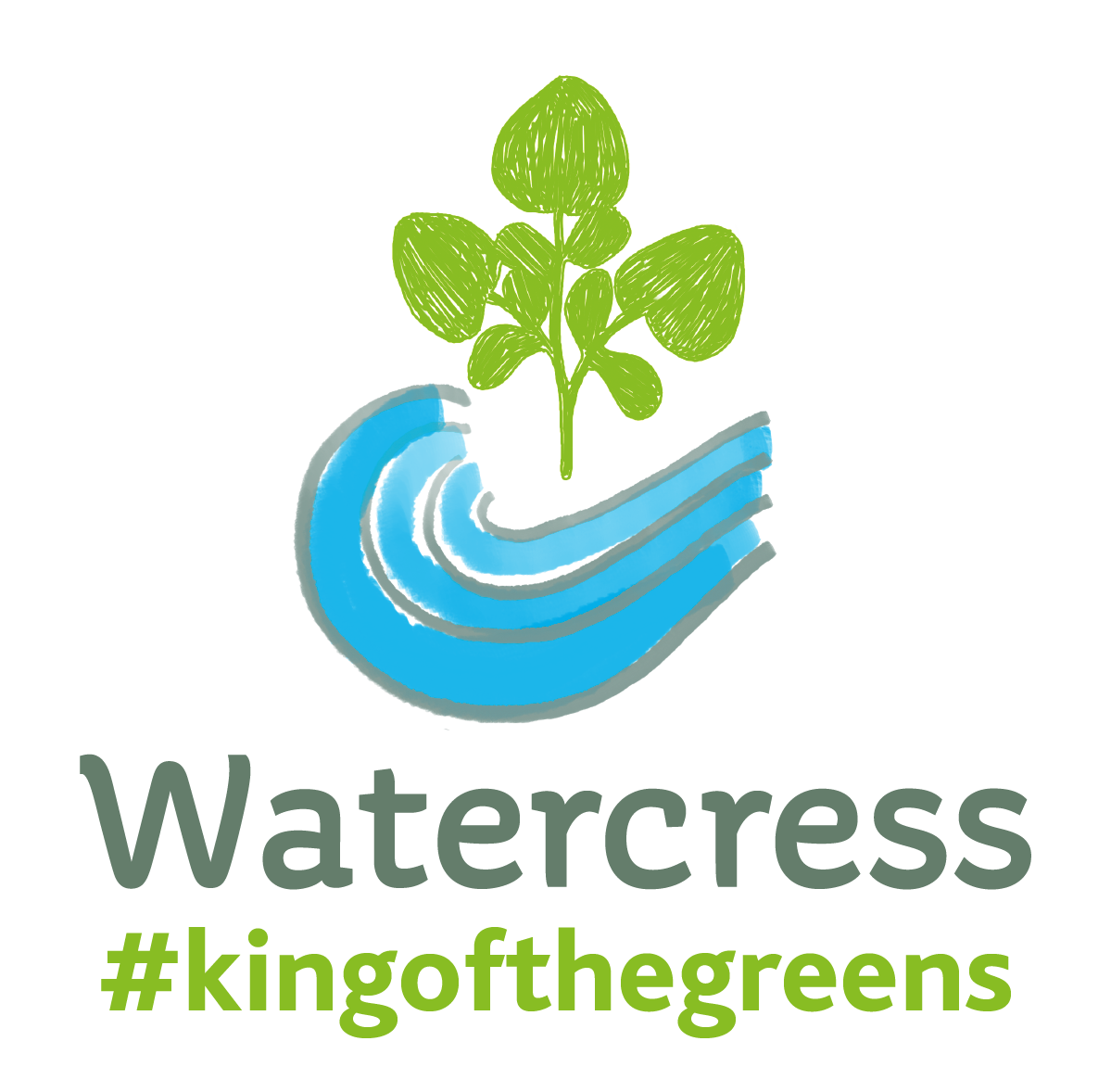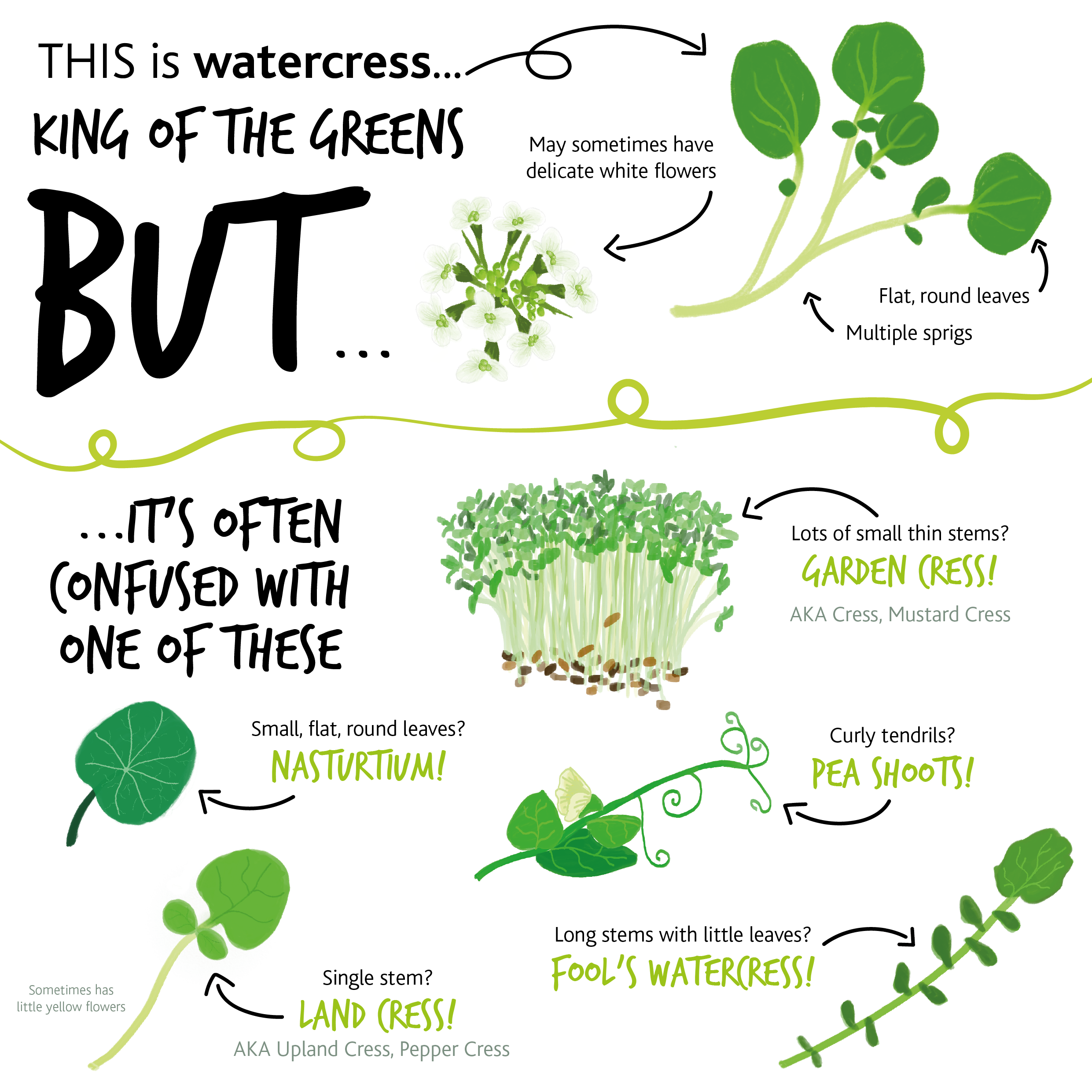How do you identify watercress?
We have been so excited to watch #watercress grow to over 130,000 posts on Instagram this year – we’ve been trying to encourage everyone to tag their plates of delicious food and so far it has worked wonderfully. We’re thrilled that more and more people are discovering and talking about watercress!
BUT there’s one thing we’ve noticed… #watercress is frequently used on salad leaves that aren’t watercress.
It’s not a problem – we love that people want to eat more watercress – but we want to help avoid any confusion. You may have seen our previous post on this topic:
What’s the difference between watercress and salad cress?
Lately we’ve noticed pea shoots, garden cress and even nasturtiums popping up on the watercress hashtag, so we thought we’d put a little graphic together to help explain the key differences between all of these plants.
The real catch is that, even though these are all delicious plants, people may think they are getting the benefits of eating watercress whilst actually enjoying something entirely different that doesn’t have the same properties.
How can I tell the difference between watercress and other salads?
The biggest giveaway that identifies watercress is the water… watercress has floating roots which allow it to grow in our gravel lined beds – absolutely no soil required! So, straight away you know anything that’s been grown in soil isn’t watercress.
The only problem with identifying watercress in this way is that you only see the stems and leaves in shop-bought produce, meaning you might not know the conditions it was grown in.
How do you identify watercress?
Here are our top tips on how to tell watercress apart from other leafy greens:
So, while some of these plants are related and may have similar flavours, they are very different to watercress.
The next time you see someone tagging a delicate nasturtium leaf as watercress, you now have the expertise to kindly correct them and help spread the word!

